If the thought of cooking a holiday meal makes you want to pour the eggnog early, Austin restaurants are ready to step in. From festive Christmas Eve dinners to cozy Christmas Day brunches and lingering holiday meals, dining rooms across the city are embracing the season with special menus and celebratory flair.
Whether folks are dressing up for a prix fixe feast or keeping things low-key with comfort classics, these spots are keeping the holiday spirit alive all Christmas long.
Just Christmas Eve
Siti
1123 E. 11th St.
On Christmas Eve, Michelin-recommended Southeast Asian restaurant Siti is offering a special five-course dinner ($100) inspired by the flavors of Singapore, Malaysia, Thailand, Indonesia, and the Philippines. Highlights include bluefin tuna chutoro, lobster with striped bass, and gula melaka sticky toffee pudding, all sprinkled with thoughtful techniques and seasonal ingredients. Optional wine pairings ($50) are available for those who want to toast the holidays. Reservations can be made online.
 Siti's five course Christmas Eve feast is inspired by the flavors of Southeast Asia. Photo by Mackenzie Smith
Siti's five course Christmas Eve feast is inspired by the flavors of Southeast Asia. Photo by Mackenzie Smith
Perry’s Steakhouse
11801 Domain Blvd. and 114 W. 7th St.
Perry’s Steakhouse is serving festive Christmas Eve menus beginning at 3 pm, with both dine-in and to-go options available. Guests can choose from a three-course prix fixe ($69) or an elevated four-course Rare and Well Done experience ( $139), featuring classics like Perry’s Famous Pork Chop and tempura-fried lobster tail. Holiday feasts for four, with prime rib and sides, are also available for pickup ($129). Dine-in reservations can be made online.
Carve American Grille
7415 SW. Parkway and 2613 Perseverance Dr.
Carve American Grille is offering a three-course Christmas Eve prix fixe menu ($69) for dining in or to go throughout the day. Seasonal dishes include miso-buttered salmon, bacon-wrapped filet, and classic holiday desserts. For larger gatherings, a Holiday Feast for Four ($169) with prime rib and signature sides is also available. Dine-in reservations and to-go orders can be made online.
 Larger parties can enjoy Carve American Grille's Prime Rib for Christmas Eve.Photo courtesy of CARVE American Grille
Larger parties can enjoy Carve American Grille's Prime Rib for Christmas Eve.Photo courtesy of CARVE American Grille
It’s Italian Cucina
1500 S. Lamar Blvd., unit 110
It’s Italian Cucina returns with its ninth annual Feast of the Seven Fishes, a traditional Italian Christmas Eve celebration. The multi-course prix fixe menu ($115) highlights seafood-forward dishes like spaghetti with clams, risotto with prawn, and Mediterranean branzino, finishing with limoncello cake. Wine pairings are available to complement each course.
Verdad True Modern Mexican
2701 Perseverance Dr.
On Christmas Eve, guests can enjoy Verdad's limited-edition Turducken Tamales appetizer with Cherry Mole ($15 for two), which are are also available to-go through December 31 (3 for $15, half-dozen $29, dozen $49). Dine-in reservations can be made online.
 VERDAD True Modern Mexican's turducken tamales are available on Christmas Eve. Photo courtesy of VERDAD True Modern Mexican
VERDAD True Modern Mexican's turducken tamales are available on Christmas Eve. Photo courtesy of VERDAD True Modern Mexican
The Dead Rabbit
204 E. 6th St.
The Dead Rabbit's holiday-themed pop-up, Jingle Jangle, is serving way more than spiked hot drinks. The food menu includes seasonal dishes like mince pies, cookies and cream, Christmas spiced butternut squash soup, and more. All of this is enveloped in the cozy warmth of an Irish pub, over-the-top Christmas decor, and classic holiday tunes. Bookings are full, but the pub promises to save room for walk-ins. More pop-ups around Austin — that are mostly centered around cocktails — can be found here.
Christmas Eve and Christmas Day
Summer on Music Lane
1101 Music Ln.
Summer on Music Lane kicks off holiday dining with a festive prix fixe menu from 5 pm to close on Christmas Eve, and on Christmas day from 11 am to 8 pm. Diners can choose between a traditional or vegan multi-course experience (both $65) featuring items like winter greens, creamy corn bisque, prime rib, cherry-glazed quail, or chile-smoked carrots, followed by caramelized apple gingerbread pudding. A range of à la carte sides, like Gruyère mac and cheese and roasted Brussels sprouts round out the wintery menu. Reservations are recommended.
 Summer on Music Lane's prefix holiday menu. Photo by Grant Pifer
Summer on Music Lane's prefix holiday menu. Photo by Grant Pifer
Acre 41
1901 San Antonio St.
Acre 41 is leaning into the holiday spirit with festive menus for Christmas Eve, Christmas Day dinner, and a special Christmas morning brunch. On both evenings, diners can opt for a slow-braised short rib with cabernet jus, pickled mustard seeds, seasonal vegetables, and butternut squash purée, served alongside the full à la carte menu. Christmas morning brings a cozy start to the day with indulgent gingerbread pancakes topped with whipped mascarpone, plus à la carte favorites for those looking to mix and match. Dinner and brunch reservations can be made online.
Skipjack Oyster
310 E. 5th St.
From 11 am to 9:30 pm, Skipjack Oyster is welcoming diners both Christmas Eve and Christmas Day with seasonal chef features alongside its regular menu. Holiday specials include acorn squash risotto, tea-smoked duck breast, and a festive Yule Log dessert. A Yuletide Pecan Sour cocktail adds a spirited finishing touch. Reservations can be made on OpenTable.
 Skipjack Oyster is open and serving up a special holiday feast alongside its regular menu all day Christmas Eve and Christmas Day. Photo courtesy of Get Noticed Creative
Skipjack Oyster is open and serving up a special holiday feast alongside its regular menu all day Christmas Eve and Christmas Day. Photo courtesy of Get Noticed Creative
Tillie's
3509 Creek Rd., Dripping Springs
A quick jaunt over the river and through the woods to Dripping Springs might inject some rustic holiday cheer into the Christmas routine, and grand decorations at Tillie's seal the deal. The restaurant is offering festive cocktails, seafood-forward small bites and mains (plus a vegan option), and luxe desserts on Christmas Eve; then on Christmas Day, brunch takes a turn toward Texas classics, with dishes like chicken and waffles and post oak smoked brisket hash. Both menus are à la carte. Reserve on OpenTable.
24 Diner
600 N. Lamar Blvd.
For those looking for an evening snack after the day's festivities — or just a casual, but homey vibe — there's 24 Diner. Guests can order from the regular menu or try the prime rib special. In February 2025, the diner returned to 24-hour service four days a week, but Christmas Eve and Day have abbreviated hours. All-night partiers and eaters can return at any hour on New Year's Eve and Day. 24 Diner does not accept reservations.
Just Christmas Day
Corinne
304 E. Cesar Chavez St.
Corinne is serving both brunch and dinner on Christmas Day, making it a flexible option for holiday dining. Brunch leans into comfort food classics and seasonal dishes paired with festive cocktails, while dinner features a chef-curated prix fixe menu ($75) centered around prime rib. Both services offer an elegant but approachable way to celebrate. Brunch and dinner reservations can be made online.
Soupleaf Hot Pot
6929 Airport Blvd.
Soupleaf Hot Pot is open Christmas Day for both reservations and walk-ins, offering its signature interactive dining experience. The family-owned spot is ideal for group celebrations, with customizable broths and ingredients designed for sharing. It’s a warm, social option for those looking to linger over their holiday meal.
The Tradition
721 Congress Ave.
From 4-9 pm, this Hyatt restaurant is serving up a special Christmas dinner spread, including starters like pozole verde, Christmas salad, and fig and prosciutto toast; entrees including rotisserie chicken, braised short rib, and creamy gnocchi; and several dessert options including a festive eggnog creme brulee. ($65 for adults, $35 for kids 12 and under.) Reserve on OpenTable.

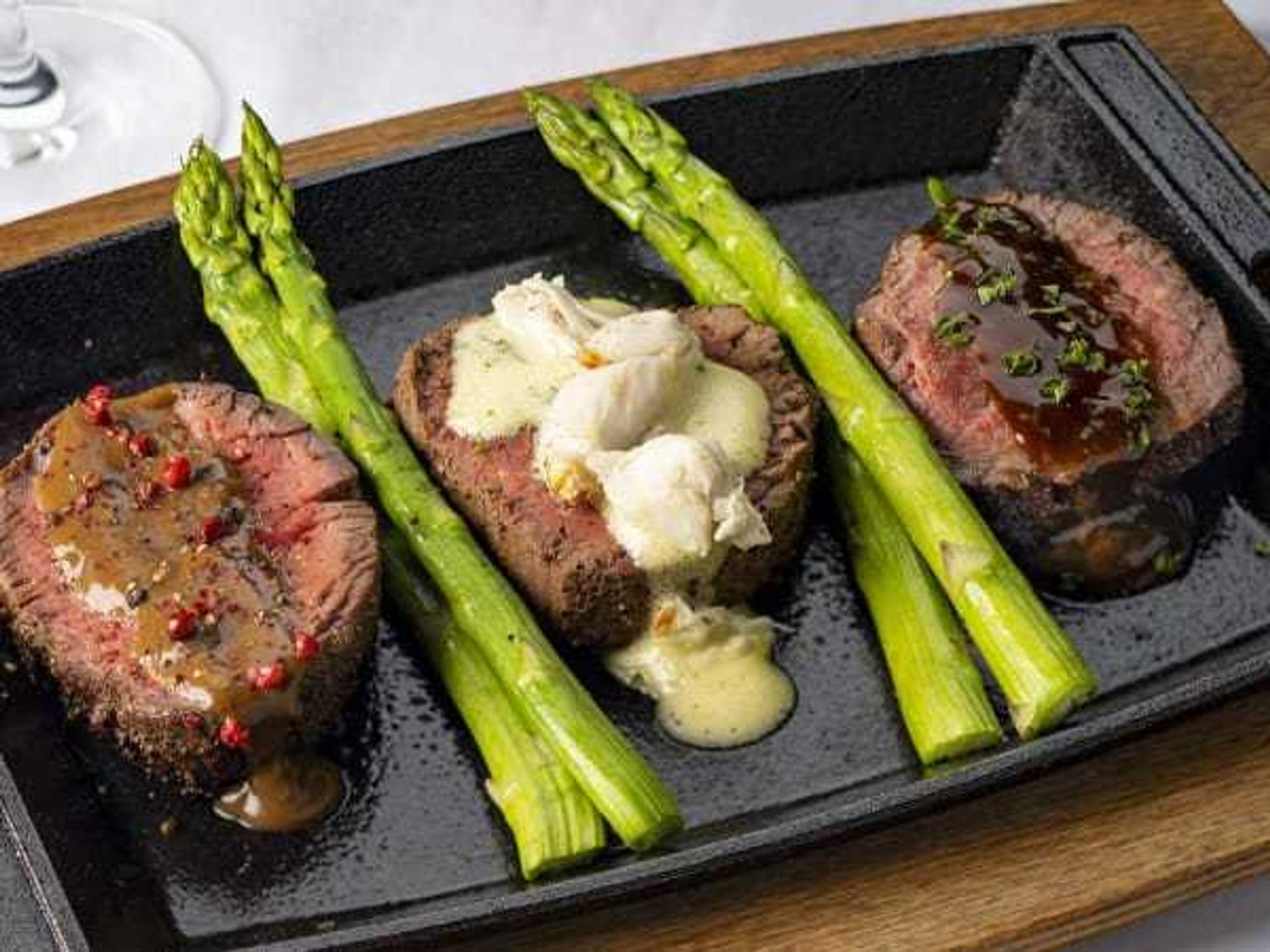
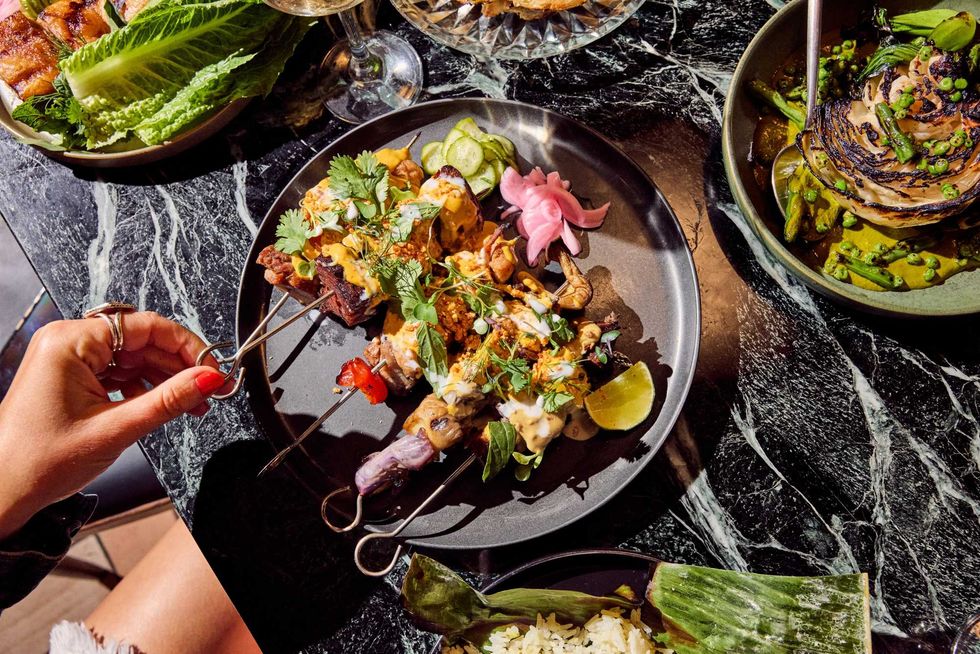 Siti's five course Christmas Eve feast is inspired by the flavors of Southeast Asia. Photo by Mackenzie Smith
Siti's five course Christmas Eve feast is inspired by the flavors of Southeast Asia. Photo by Mackenzie Smith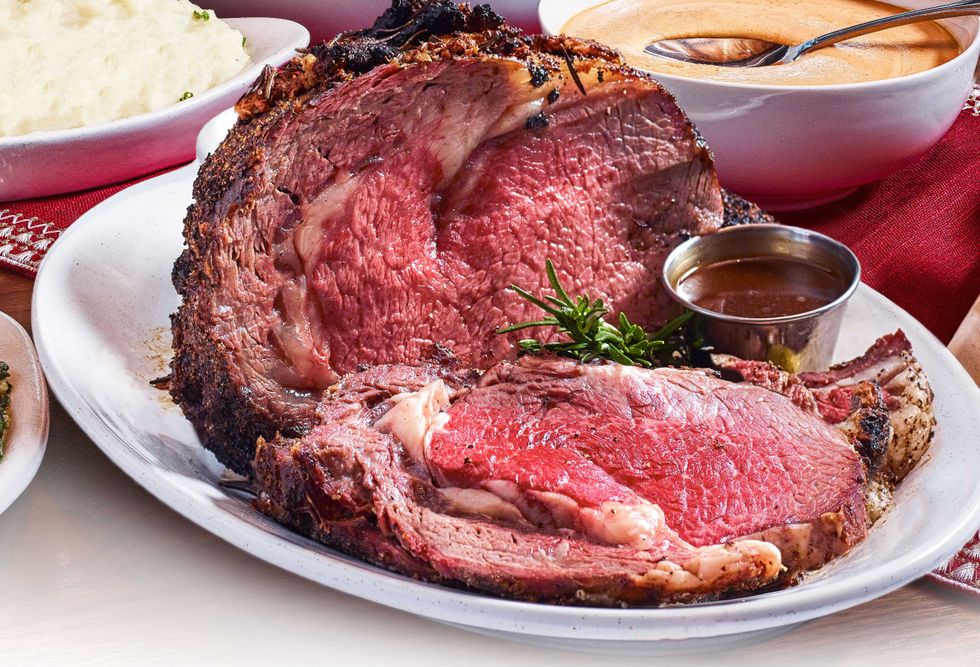 Larger parties can enjoy Carve American Grille's Prime Rib for Christmas Eve.Photo courtesy of CARVE American Grille
Larger parties can enjoy Carve American Grille's Prime Rib for Christmas Eve.Photo courtesy of CARVE American Grille VERDAD True Modern Mexican's turducken tamales are available on Christmas Eve. Photo courtesy of VERDAD True Modern Mexican
VERDAD True Modern Mexican's turducken tamales are available on Christmas Eve. Photo courtesy of VERDAD True Modern Mexican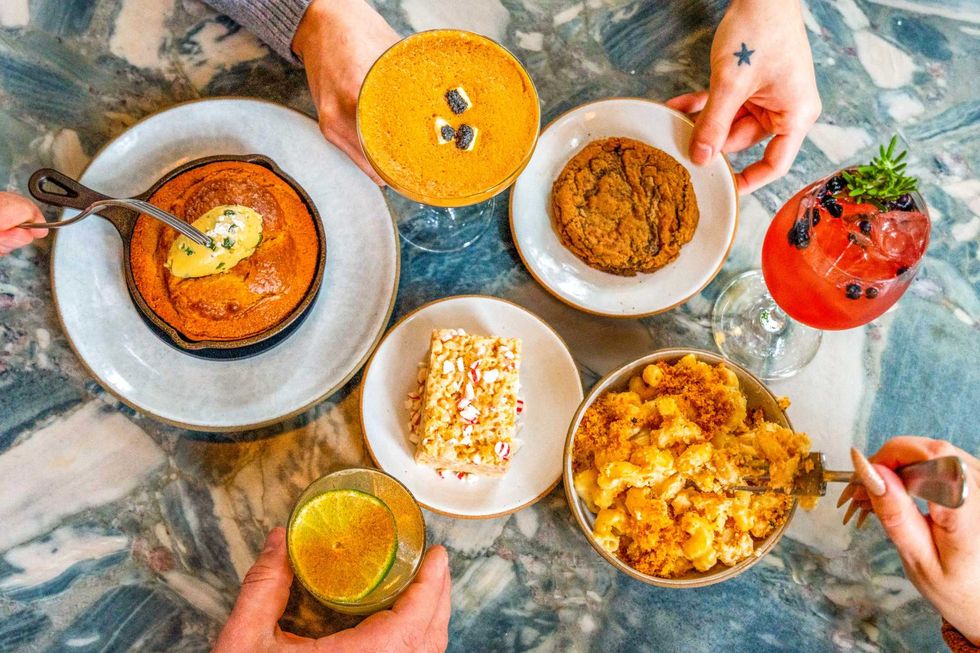 Summer on Music Lane's prefix holiday menu. Photo by Grant Pifer
Summer on Music Lane's prefix holiday menu. Photo by Grant Pifer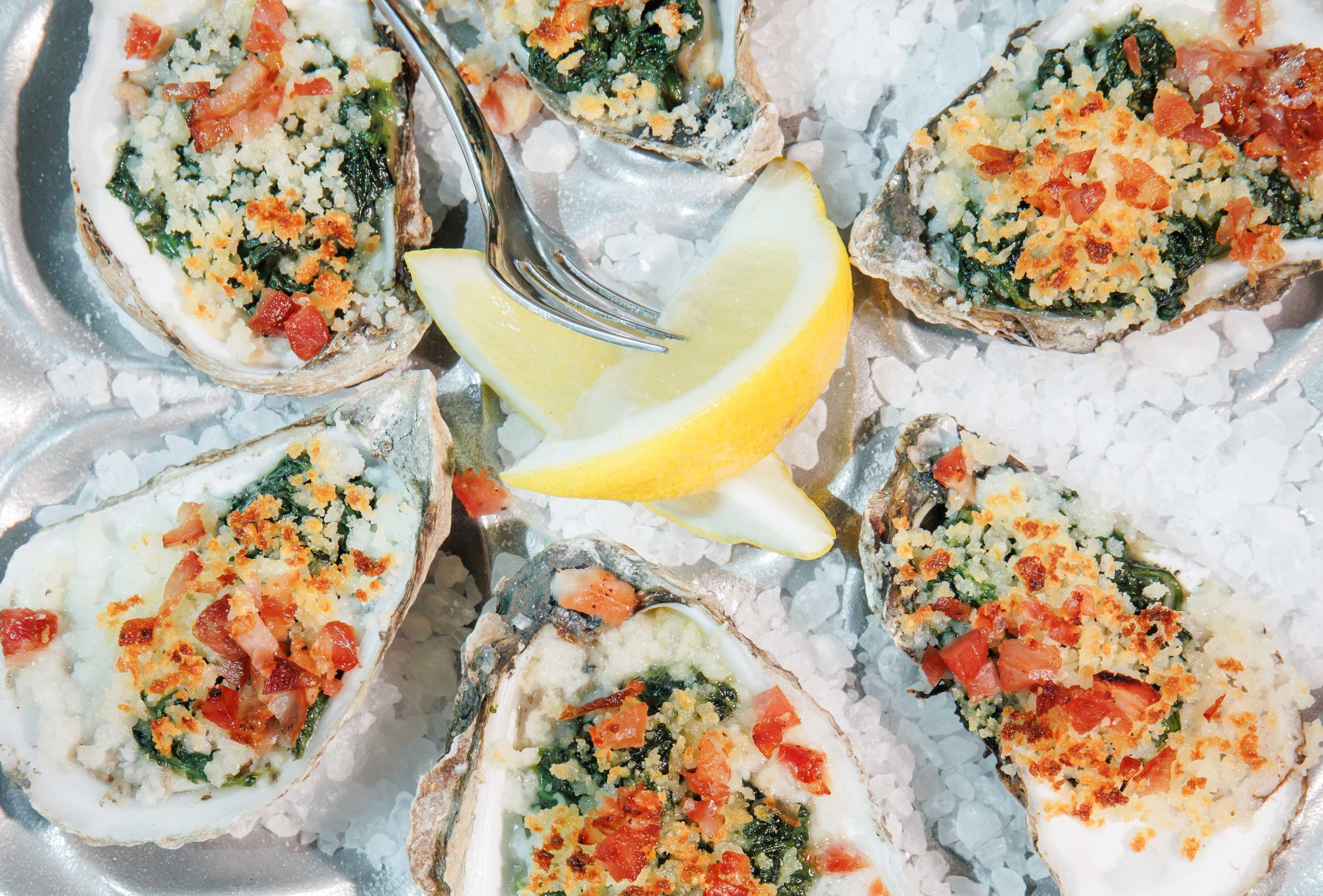 Skipjack Oyster is open and serving up a special holiday feast alongside its regular menu all day Christmas Eve and Christmas Day. Photo courtesy of Get Noticed Creative
Skipjack Oyster is open and serving up a special holiday feast alongside its regular menu all day Christmas Eve and Christmas Day. Photo courtesy of Get Noticed Creative